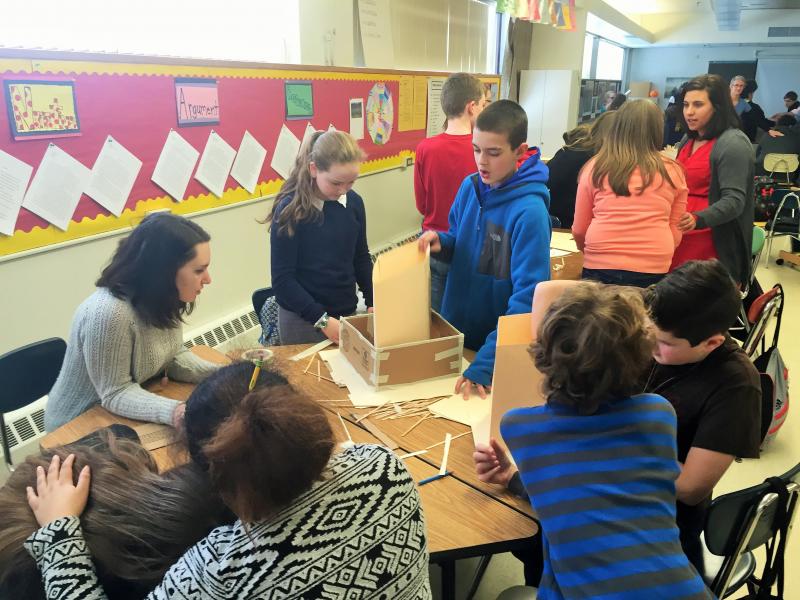BRUNSWICK – Brunswick Junior High School 7th graders competed to see who could build the most energy efficient “home” last week, with some pretty surprising results. The structures started with cardboard from the cafeteria, and the insulation and air sealing options were limited to paper, aluminum foil, plastic wrap, blueboard, tape, and glue, but the improvements helped students connect the science of heat transfer to the real-life challenges of weatherizing Maine homes.
“The kids can unequivocally confirm that well-taped plastic wrap is great at reducing air leakage but not so great at stopping heat loss,” said Cree Krull, who led the activity and helped students test their structures with fans and infrared cameras. “And we can extend that observation to explain why homes need air sealing and insulation.”
Krull should know; as an energy advisor at Evergreen Home Performance, he uses the same tools to assess real homes for air and heat loss. “Using an infrared camera is pretty straightforward, so it makes sense to have kids work with the real thing,” said Krull. “Interpreting what you see and knowing what to do about it is what takes expertise.”
The BJHS students may not be ready for careers in energy efficiency yet, but they’re much more informed thanks to a month-long interdisciplinary project that highlights the science, economics, and politics of home weatherization and introduces students to the need for lower reliance on home heating oil and greater emphasis on energy efficiency.
“Weatherizing Maine’s old homes reduces our dependence on the fossil fuels used to heat them, which in turn reduces heating expenses and environmental impacts” said BHJS teacher Cris Lavigne. “When kids learn how weatherization works and how they can be a part of it, they make things better for their community. It’s a powerful service-learning opportunity.”
Students will share what they’ve learned by creating a bank of weatherization materials, along with instructions on how to use them, and using those weatherization materials to seal drafty spaces in their lives. In March, they will share the results of their learning at a community-wide event.






























